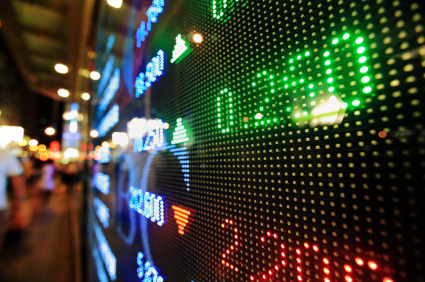The Australian Dollar to Euro (AUD/EUR) exchange rate is trending within a tight range on Monday morning.
As we draw closer to Tuesday’s Reserve Bank of Australia rate decision, the ‘Aussie’ (AUD) is generally holding steady versus the majority of its most traded rivals. With many experts feeling that a rate cut has been priced-in, the South Pacific asset is unlikely to decline further, despite disappointing manufacturing data out of China.
The Euro, meanwhile, is generally trending higher than most of its major peers as a result of speculation that the Swiss National Bank intend to maintain an unofficial Euro cap.
The Australian Dollar to Euro (AUD/EUR) exchange rate is currently trending in the region of 0.6884.
Previously…
At the close of last week, the Australian Dollar to Euro (AUD/EUR) exchange rate was trending within the range of 0.6815 and 0.6879.
With the markets seemingly unsure of how to treat the common currency of late prior to the European Central Bank (ECB) beginning its long-anticipated quantitative easing programme, it is very possible that the domestic data will have minimal impact.
Similarly for the Australian Dollar, any significant advance is unlikely until the Reserve Bank of Australia (RBA) makes its interest rate decision.
Australian Dollar (AUD) Exchange Rate Forecast to Fluctuate ahead of RBA
Late on Sunday evening there will be several domestic data publications with the potential to provoke volatility for the ‘Aussie’ (AUD). Of most significance will be January’s AiG Performance of Manufacturing Index, which hit 46.9 previously.
Monday’s China Manufacturing PMI is likely to impact upon ‘Aussie’ movement. The market consensus is that output will hold in line with the previous figure of 49.8, but recent declination in iron ore suggests that demand from China slowed as manufacturing output cooled.
The RBA rate decision will be highly influential and is due to be announced on Tuesday. Forecasting events after the decision is difficult given the scope for volatility. With oil prices causing inflationary issues in most developed economies, speculation that the RBA will be forced to cut rates is mounting steadily. The recent decision by the Bank of Canada (BOC) to cut rates for the same reason has spurred anticipation that the RBA will emulate the BOC.
The price of iron ore, Australia’s largest commodity, has also fallen spectacularly in the last year.
‘Over the December quarter export prices fell at a much faster rate compared with imported goods, resulting in a near one per cent percent slide in the terms of trade ratio. The terms of trade has now fallen for over two years, and coupled with low inflation, is likely to result in the RBA shifting rhetoric to an easing bias,’ CommSec’s economist, Savanth Sebastian, said in a note.
Euro (EUR) Exchange Rate Forecast to Hold Gains on QE
Given that European data had minimal impact on Euro movement last week, it is possible that the pattern will continue over the course of the coming week. The lack of influence from domestic data can be attributed to traders speculating that once the ECB begins the QE programme, the Eurozone economy will show signs of recovery.
Of all of the data due for publication over the coming week, Thursday’s docket is likely to have the most significant impact. German Factory Orders, Germany Construction PMI, the ECB’s Economic Bulletin, Germany Retail PMI and Eurozone Retail PMI data will be of significance to those interested in the Australian Dollar to Euro (AUD/EUR) exchange rate.
For those invested in the Australian Dollar, oil prices will be of significance. The commodity-correlated asset is subject to changes in crude, with continued declination weighing on demand for higher-yielding currencies.
China’s Services/Composite PMI will also be worth noting. HSBC economist Hongbin Qu said of the last Services figure; ‘The headline HSBC China Services PMI rose to 53.4 in December, up from 53.0 in November. The solid performance was supported by another strong expansion in new business. The employment index improved modestly and price pressures remain muted. The services sector continued to hold up well amidst the manufacturing downturn, providing some counter-weight to the downward
pressures on the economy.’
Euro traders will want to keep a close eye on developments in Greece. Although trader anxieties eased after Syriza was forced to rule as part of a coalition, the flamboyant new Prime Minister is making waves in European politics.
At the close of last week, the Australian Dollar to Euro (AUD/EUR) exchange rate was trending in the region of 0.6851.



